
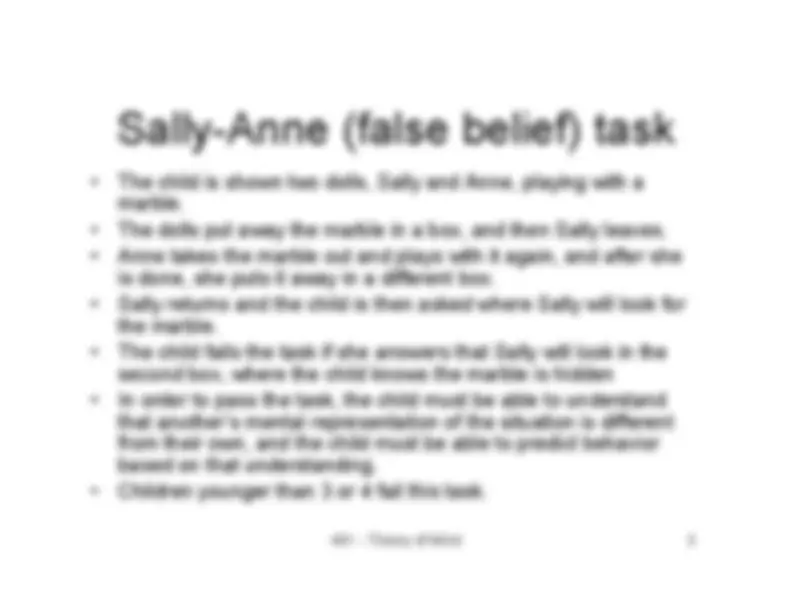
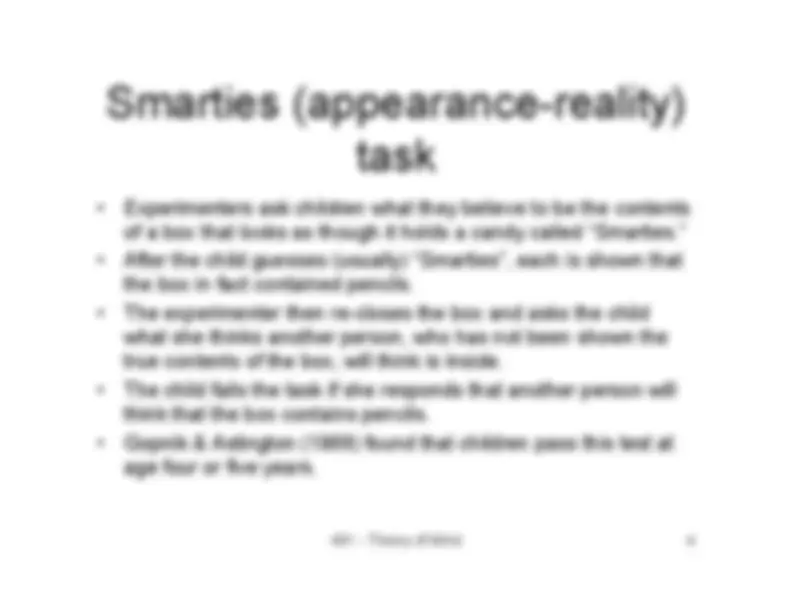
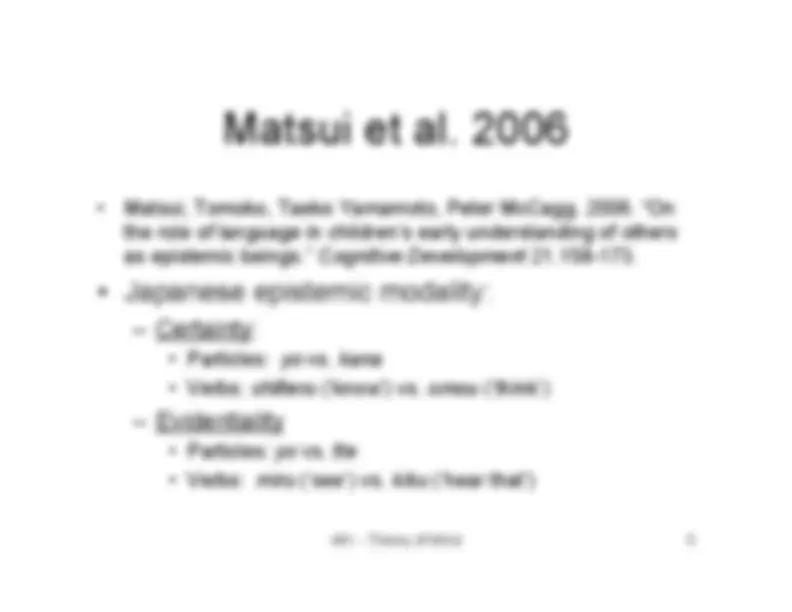
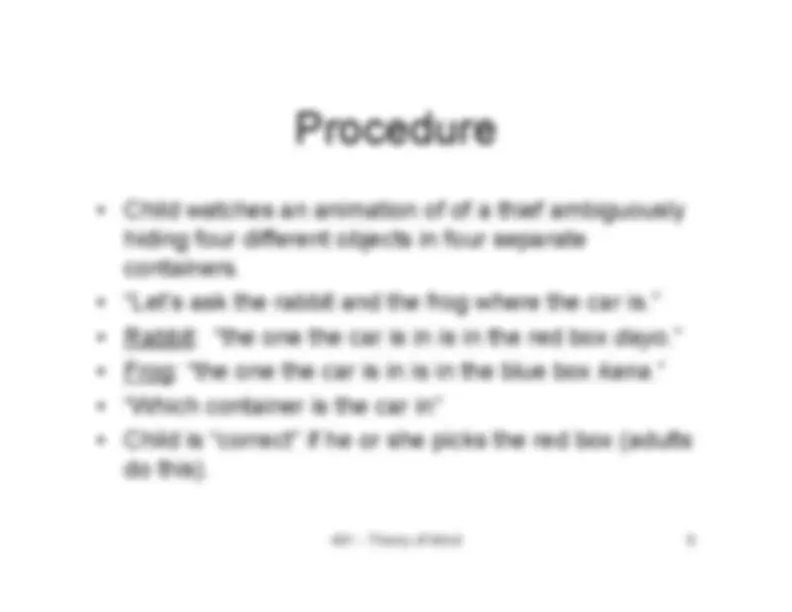
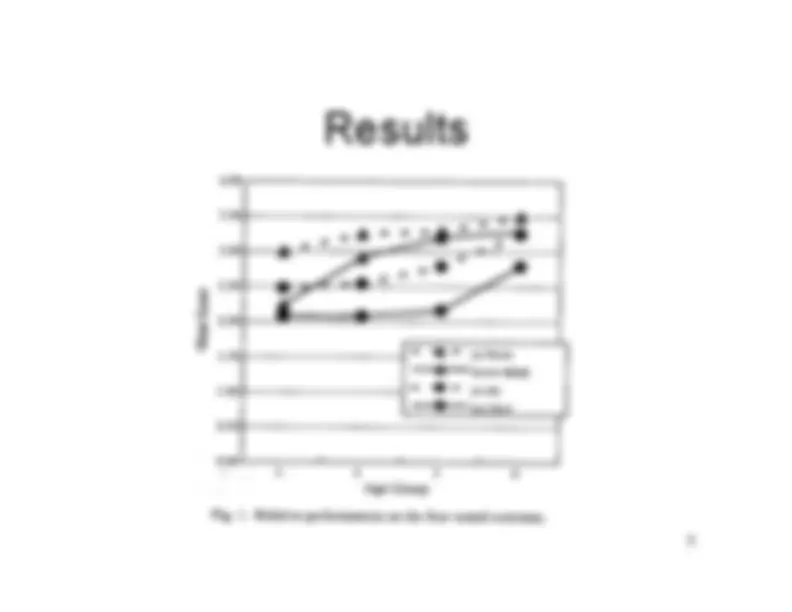
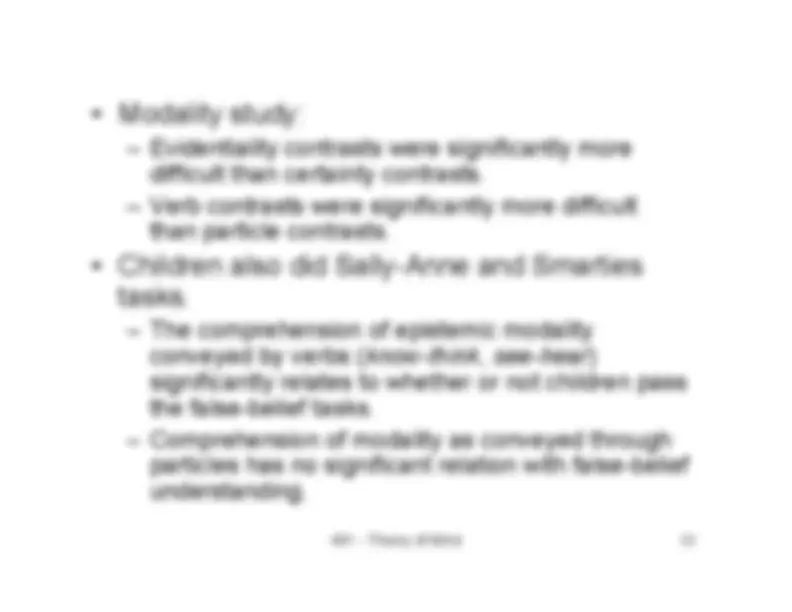


Study with the several resources on Docsity

Earn points by helping other students or get them with a premium plan


Prepare for your exams
Study with the several resources on Docsity

Earn points to download
Earn points by helping other students or get them with a premium plan
Community
Ask the community for help and clear up your study doubts
Discover the best universities in your country according to Docsity users
Free resources
Download our free guides on studying techniques, anxiety management strategies, and thesis advice from Docsity tutors
The concept of Theory of Mind (ToM), the ability to attribute mental states to oneself and others, enabling interpersonal understanding and predicting behavior. the Sally-Anne and Smarties tasks, Japanese epistemic modality, and a corpus study. ToM is crucial for social interaction and language use.
Typology: Slides
1 / 11

This page cannot be seen from the preview
Don't miss anything!






